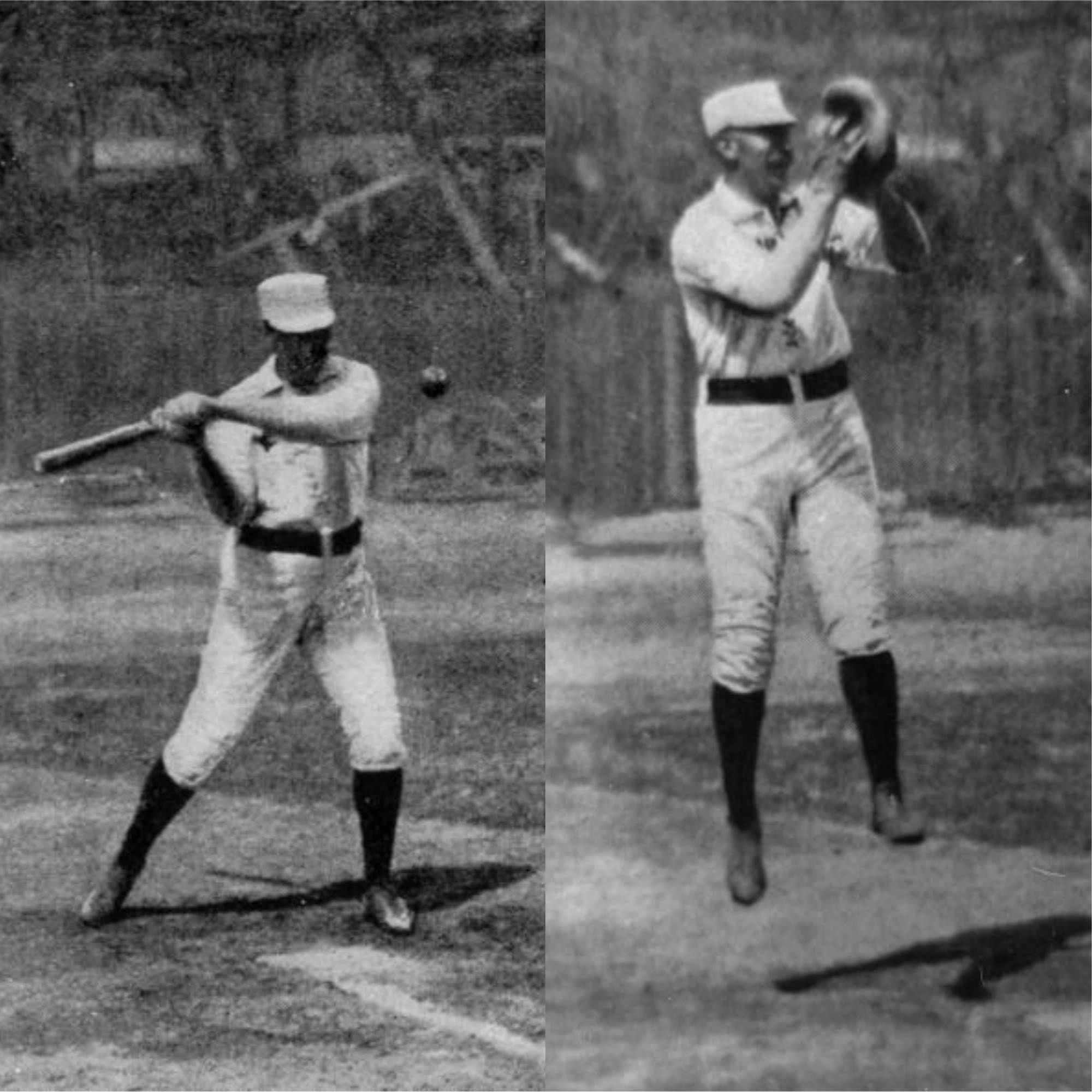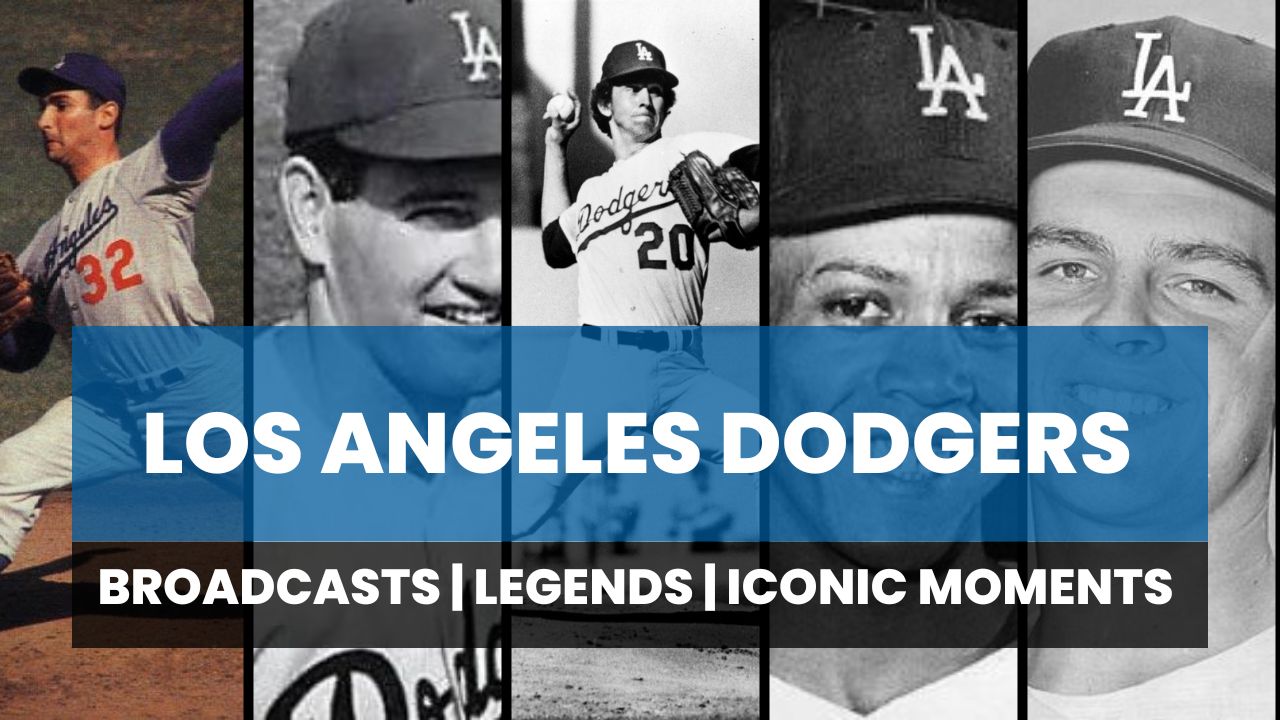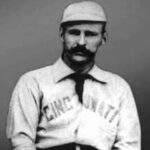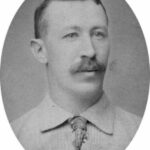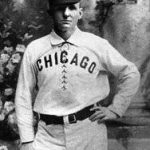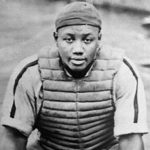Buck Ewing Stats & Facts
Buck Ewing
Positions: Catcher, First Baseman and Rightfielder
Bats: Right • Throws: Right
5-10, 188lb (178cm, 85kg)
Born: October 17, 1859 in Hoagland, OH
Died: October 20, 1906 in Cincinnati, OH
Buried: Mount Washington Cemetery, Cincinnati, OH
Debut: September 9, 1880 (487th in major league history)
Last Game: May 27, 1897
Hall of Fame: Inducted as Player in 1939. (Voted by Old Timers Committee)
View Buck Ewing’s Page at the Baseball Hall of Fame (plaque, photos, videos).
Full Name: William Ewing
View Player Info from the B-R Bullpen
View Player Bio from the SABR BioProject
Relatives: Brother of John Ewing
Nine Players Who Debuted in 1880
Tim Keefe
Roger Connor
Mickey Welch
Old Hoss Radbourn
Buck Ewing
Harry Stovey
Fred Dunlap
Arlie Latham
Larry Corcoran
The Buck Ewing Teammate Team
C: Jack O’Connor
1B: Roger Connor
2B: Bid McPhee
3B: Denny Lyons
SS: John Ward
LF: Jesse Burkett
CF: George Gore
RF: Mike Tiernan
SP: Tim Keefe
SP: Mickey Welch
SP: Cy Young
SP: Amos Rusie
M: Jim Mutrie
Vintage Baseball HOT ON EBAY
Card Collections ENDING SOON ON EBAY
MOST WANTED ROOKIE CARDS
VINTAGE SPORTS TICKETS
Baseball Hall of Famers
Notable Events and Chronology for Buck Ewing Career
Buck Ewing
Buck Ewing (shown here at the Polo Grounds in 1892) is a name vaguely familiar to most baseball history buffs. Ewing is not a forgotten star—he was inducted into Cooperstown in 1939—but few realize just how highly his contemporaries rated him. For decades following his retirement, the multitalented catcher was often mentioned in the same breath as Roger Bresnahan, Ty Cobb, and Honus Wagner—along with a host of other legendary figures. As late as the 1940s, big-league catchers were still occasionally compared to the man Sporting Life once called “the Greatest of All.”
In the 1919 Reach Official Baseball Guide, editor Francis Richter wrote: “[W]e have always been inclined to consider Catcher-Manager William (‘Buck’) Ewing in his prime . . . as the greatest player of the game from the standpoint of supreme excellence in all departments—batting, catching, fielding, base-running, throwing, and base ball brains—a player without a weakness of any kind, physical, mental, or temperamental.” Connie Mack—a former catcher who later managed Hall of Famer Mickey Cochrane—offered similar praise on multiple occasions.
Ewing’s offensive stats are impressive, especially during an era in which weather-worn catchers were lucky to hit above .200. Between 1888 and 1893, he hit .326 while averaging 15 triples and only 23 strikeouts per full season. (Ewing hit 20 triples in 1884 and 15 on four other occasions; no other catcher has hit as many as 15 three-baggers in a season.) The slugging backstop led the NL with 10 home runs in 1883 and his 178 career triples rank 18th all-time. Over an 18-year career (1880-97), he slashed .303/.351/.456 with 250 doubles, 71 homers, 883 RBI, 1,129 runs scored, and 354 stolen bases. That averages out to 29 doubles, 103 ribbies, 132 runs, and 41 steals per 154 games played.
Ewing appeared in 1,345 games, with 636 of them coming behind the plate (he caught a career-best 97 games for the 1889 Giants). Without a chest protector, a sturdy mask or shin guards, it was a challenging position, to say the least. (He occasionally wore a primitive catcher’s mask and was among the first to use a larger glove with padding.) Said by contemporaries to possess the best throwing arm of any position player during his prime, Ewing was famous for gunning down runners from the crouching position. He paced the NL in assists on three occasions and threw out 38% of would-be base stealers during the four years of his career in which records were kept.
In today’s terminology, Ewing would be described as a super-utility player. The 5-foot-10-inch, 188-pound dynamo appeared in 253 games at first base, 235 in the outfield, 127 at third, 51 at second, 34 at short, and nine as a pitcher (he posted a 3.45 ERA with 23 Ks in 47 innings pitched). Hall of Famer Tim Keefe once described his former teammate’s multipositional brilliance: “While the greatest catcher of ancient or modern times, he could do a smart trick in the box, and once almost killed Roger Conner with one of his fast ones. He could play any infield position skillfully. I never saw anyone play a deeper short than he.”
On October 20, 1906, William “Buck” Ewing, age 47, died at his home in Cincinnati, Ohio. His premature death was due to complications related to diabetes. United Press ran a glowing obituary which read in part: “Ewing was probably the greatest of the earlier day catchers. In fact, at the present time there are many persons who believe him to have been the greatest the world will ever know. Even the work of Johnny Kling and Billy Sullivan, the best in their respective leagues, is compared and found lacking beside that done by ‘Buck’ Ewing.”
“Is there today any greater baseball player than Buck Ewing was? Ah, he was the greatest of ‘em all—indeed the grandest that the game has ever known. Universally acknowledged . . . as the king of catchers, he also shone in other departments, for he was a hard natural hitter, could run bases with the top-notchers and could play any of the infield or outfield positions as well as any.” — Mickey Welch, 1908.
“Ewing never has known an equal as a catcher. I call him the best ball player the world ever has known.” — Clark Griffith, 1914.
“He came as near to being a catcher without a single weakness as the game has ever known. In fact, Buck Ewing was a Ty Cobb behind the bat. . . . Ewing had so much confidence in his throwing that I have seen him deliberately roll the ball away from him just to tempt the base runner into a steal. He was hard hitter as well as a scientific place hitter.” — John McGraw, 1923.
✍️ Bobby King II
◾Sources: https://baseballhall.org + https://www.baseball-reference.com + https://chroniclingamerica.loc.gov + https://baseballhistorydaily.com + https://www.newspapers.com + James, Bill. “The Bill James Historical Baseball Abstract.” New York: Villard, 1988.
@ET-DC@eyJkeW5hbWljIjp0cnVlLCJjb250ZW50IjoicG9zdF90YWdzIiwic2V0dGluZ3MiOnsiYmVmb3JlIjoiTGVhcm4gTW9yZSBhYm91dCB0aGUgdGVhbXMsIHBsYXllcnMsIGJhbGwgcGFya3MgYW5kIGV2ZW50cyB0aGF0IGhhcHBlbmVkIG9uIHRoaXMgZGF0ZSBpbiBoaXN0b3J5IC0gLSAtIC0gLSAtIC0gIiwiYWZ0ZXIiOiIiLCJsaW5rX3RvX3Rlcm1fcGFnZSI6Im9uIiwic2VwYXJhdG9yIjoiIHwgIiwiY2F0ZWdvcnlfdHlwZSI6InBvc3RfdGFnIn19@
Vintage Baseball HOT ON EBAY
Card Collections ENDING SOON ON EBAY
MOST WANTED ROOKIE CARDS
VINTAGE SPORTS TICKETS
Baseball Hall of Famers
Factoids, Quotes, Milestones and Odd Facts
Played For
Troy Trojans, National League (1880-1882)
New York Giants (1883-1892)
Cleveland Spiders (1893-1894)
Cincinnati Reds (1895-1897)
Managed
New York Giants, Players League (1890)
Cincinnati Reds (1895-1899)
New York Giants (1900)
Similar: When he was active, Ewing was compared to Charley Bennett, the star catcher for Detroit in the 1880s. After a few seasons, Ewing surpassed Bennett as the finest catcher of the era.
Linked: In 2000, Rockies’ catcher Brent Mayne took to the mound for Colorado after his team had sent nine pitchers to the mound in 11 innings. Mayne went on to get the win for the Rockies, and became the first catcher to get a win a major league game since Ewing, in 1889.
Family Tree
His brother, John Ewing, was a pitcher who won 53 games from 1888-1891. John died at the age of 31 in 1895, from consumption or diabetes, depending on which source you believe.
Best Season, 1893
Ewing played the outfield in 1893 for the Cleveland Spiders. He hit .344 with 117 runs scored, 122 RBI, 28 doubles and 15 triples.
Post-Season Appearances
1888 World Series
1889 World Series
Description
Ewing’s throwing exploits were legendary. One of his favorite tricks was to peg runners off base after he allowed a ball to squirt away from him on purpose. Ewing would pretend to fumble a ball, allowing it to trickle a few inches from his glove, and sometimes even pretend to lose sight of it, then he would wait for the runner to break from the bag and peg him with a perfect throw.
Factoid
Buck Ewing is credited with laying out the design of New York’s Polo Grounds.
Where He Played: Catcher (636), first base (253), outfield (235), third base (127), second base (51), shortstop (34), pitcher (9).
Big League Debut: September 9, 1880
Ewing made his debut with Troy on September 9, 1880, playing alongside future Hall of Famers Dan Brouthers (1B), Roger Connor (3B) and Tim Keefe (P).
Notes
In 1906, Ewing died at the age of 47, from Bright’s Disease, which he had battled for three years.
Replaced By
In 1897, Jake Beckley moved into the first base slot where Ewing had been the previous season. Beckley had been acquired from Ewing’s old team the New York Giants.
Best Strength as a Player
Throwing arm
Largest Weakness as a Player
None, really.
Other Resources & Links
If you would like to add a link or add information for player pages, please contact us here.

